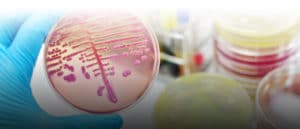What does a microbiologist do?
A microbiologist’s primary role is to study the microorganisms that cause infections, to understand how they work and how they can enhance the quality of human life. They aim to identify how to control, prevent, and diagnose diseases by studying the biology of microbes and using this information for various purposes.
Microbiology studies microorganisms, like fungi, algae, viruses, bacteria, and different kinds of parasites. Students learn to identify, assess, and determine ways these organisms grow, live, and interact with their environment. A microbiologist works mainly in a lab, not in the field.
In the lab, most of the testing, culturing, and research that they do occurs. This location contains the supplies and equipment needed for these activities and provides an extremely clean and sterile place to work.
To understand what occurs in a microbiology lab, what a microbiologist should be understood. A microbiologist studies microscopic life forms, including bacteria, viruses, and fungi. These life forms live everywhere — in the soil, air, water, and even inside animals. Many of these life forms are so small that they can not be seen by the unaided eye and are called microorganisms. Often, a microbiologist will have to separate and grow the microorganisms to see better, study, and experiment on them. All of these activities occur in the lab.
Most look like any other biology or chemistry lab. They will probably have long lab benches where scientists can easily set up their equipment and work. Large, partially transparent fume hoods will be present to keep the scientists safe from any dangerous experiments. However, the fume hoods in a microbiology lab may contain special ultraviolet (UV) lights that hinder and kill some microorganisms.
A large device called an autoclave that sterilizes equipment will be located somewhere in or near the lab so that the scientists can do their work without contaminating their samples. Standard lab equipment like microscopes, test tubes, balances, Bunsen burners, desiccators, heating pads, pipettes, vortexes (vortices), books, and computers will also be there. Some labs will have special venting and seals on them to keep them clean. Though most entry-level microbiologists will not encounter this type, these labs may require those entering them to wear special clean suits.
Microbiology labs usually have specialized supplies and equipment in them beyond what is in traditional labs. It will often have multiple types of refrigerators, some of which store samples and others store nutrients and “clean” supplies. Large, sealed buckets called fermentors that are used to culture yeast might be present. Different types of nutrient gels called agar would be in the lab.
## What Does a Microbiologist Do?
**Microbiology** is the study of microorganisms, including bacteria, viruses, fungi, and protozoa. Microbiologists investigate their structure, function, metabolism, growth, and interaction with other organisms. They play a vital role in various fields, including medicine, agriculture, environmental science, and biotechnology.
### Key Responsibilities of a Microbiologist
Microbiologists perform a wide range of tasks:
* **Identify and classify microorganisms:** They use traditional techniques such as culturing and staining, as well as molecular techniques like DNA sequencing to identify and characterize microorganisms.
* **Study microbial growth and metabolism:** Microbiologists investigate the growth requirements, nutritional needs, and metabolic processes of microorganisms.
* **Analyze microbial interactions:** They examine how microorganisms interact with each other and with plants, animals, and humans. This includes studying microbial symbiosis, commensalism, and pathogenesis.
* **Develop diagnostic tests:** Microbiologists create and evaluate tests to identify and diagnose microbial infections in humans, animals, and plants.
* **Study infectious diseases:** They research the transmission, prevention, and treatment of infectious diseases caused by microorganisms.
* **Develop antimicrobial drugs:** Microbiologists collaborate with chemists to develop new antibiotics and other antimicrobial therapies.
* **Monitor microbial ecology:** They study the distribution and abundance of microorganisms in various environments, such as soil, water, and the human body.
* **Apply microbiology in agriculture:** Microbiologists investigate the role of microorganisms in plant growth, soil fertility, and pest control.
* **Use microorganisms in biotechnology:** They harness the capabilities of microorganisms to create biofuels, enzymes, and other products.
### Educational Requirements for a Microbiologist
Most microbiologists hold a bachelor’s degree in microbiology, biology, or a related field. Graduate degrees (Master’s or PhD) are often required for research or leadership positions. Aspiring microbiologists typically complete coursework in biochemistry, genetics, molecular biology, immunology, and statistical analysis.
### Career Outlook and Salary Expectations
According to the U.S. Bureau of Labor Statistics, the median annual salary for microbiologists was $82,430 in 2021. The job outlook for microbiologists is projected to grow 5% from 2021 to 2031, faster than average for all occupations. This growth is due to increasing demand for microbiologists in areas such as healthcare, biotechnology, and environmental protection.
### Conclusion
Microbiologists play a crucial role in understanding and managing microorganisms, which impact our health, agriculture, and environment. They perform diverse tasks ranging from identifying and classifying microorganisms to developing diagnostic tests and antimicrobial therapies. With the increasing demand for microbiologists in various fields, the career outlook is promising for professionals with the necessary education and skills.







A microbiologist studies microorganisms, such as bacteria, fungi, and viruses.
They identify, classify, and characterize microorganisms, and study their structure, function, and interactions with each other and with the host organism.